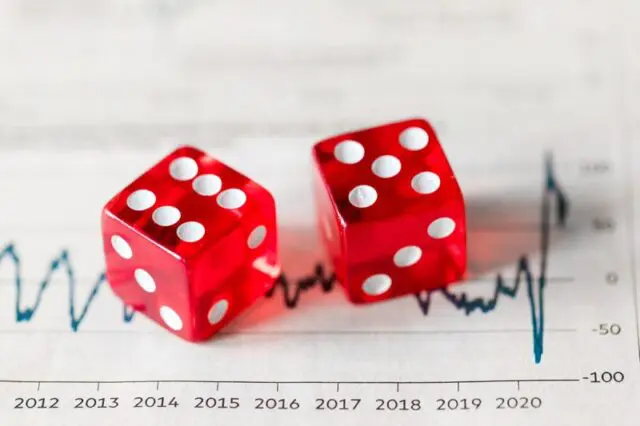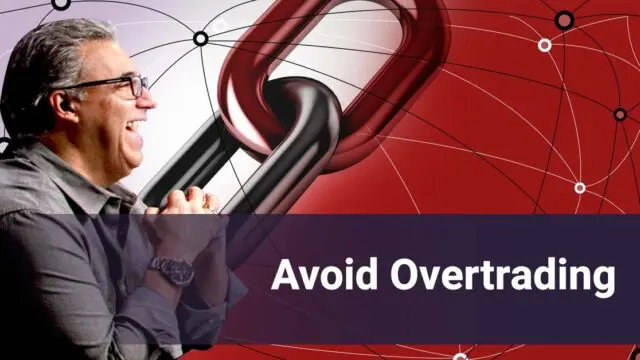
Trading often appears to outsiders as a game of chance, where luck determines winners and losers. This view could not be further from the truth. Successful trading demands a well-thought-out strategy, discipline, and the ability to adapt to ever-changing market conditions. Luck may play a minor role, but relying on it is a recipe for failure.
This article will explore the critical role of strategy in trading, why luck alone is insufficient, and how to develop a strategy that suits your goals.
Why Luck Fails in Trading

Randomness and Market Unpredictability
Markets move based on a mix of economic, political, and social factors. Relying on luck means ignoring the complexities behind these movements. While occasional gains may seem like the result of good fortune, consistent success requires understanding trends, analyzing data, and making informed decisions.
Emotional Decision-Making
Luck often fuels impulsive actions, leading traders to chase trends or panic during downturns. These emotional decisions rarely align with market realities, often resulting in losses. A strategic approach, on the other hand, eliminates guesswork, focusing on logic and preparation.
The Role of Odds in Trading
Trading is not gambling. Professional traders calculate risks and rewards, ensuring their decisions are backed by data rather than chance. Relying solely on luck often leads to ignoring these calculated odds, increasing the likelihood of failure.
The Importance of Strategy in Trading
Defining a Clear Plan
A trading strategy acts as a roadmap, guiding traders through various market conditions. Without a plan, traders are more likely to act impulsively, increasing their risk of loss. A clear strategy includes entry and exit points, risk management, and goals.
Risk Management as a Foundation
Risk management is the backbone of any trading strategy. It involves setting stop-loss orders, determining position sizes, and avoiding over-leverage. These practices protect traders from significant losses and keep them in the game for the long term.
Consistency Over Time
Strategies allow traders to remain consistent, even in volatile markets. This consistency helps build confidence and provides a foundation for analyzing what works and what does not. Luck lacks this predictability, leading to inconsistent results.
Tools and Resources for Effective Trading
Trading Platforms and Software

Choose a platform that offers real-time data, analytical tools, and a user-friendly interface. Reliable platforms enhance decision-making by providing accurate information. Be sure to check out auto trading software.
Educational Materials
Books, courses, and webinars provide valuable insights into trading strategies and market behavior. Continuous learning is essential for staying ahead.
Simulated Trading
Simulated or demo trading allows you to test strategies without risking real money. This practice builds confidence and helps identify areas for improvement before entering live markets.
Building Your Trading Strategy
Understanding Your Goals
Before trading, it is essential to define what you want to achieve. Are you aiming for short-term profits, long-term investments, or a mix of both? Your goals will shape the type of strategy you adopt.
Choosing the Right Markets
Each market—stocks, forex, commodities, or cryptocurrency—operates differently. Researching the specific market you wish to trade in helps tailor your strategy to its unique characteristics.
Developing a Systematic Approach
Fundamental Analysis
Fundamental analysis involves examining the financial health of a company or asset. Factors like earnings reports, industry trends, and macroeconomic indicators guide long-term decisions.
Technical Analysis
Technical analysis focuses on price charts, patterns, and indicators to predict future movements. This approach is particularly useful for short-term traders who need to identify trends and potential reversals.
Combining Both Approaches
Many traders find success by combining fundamental and technical analysis. This hybrid approach provides a broader perspective, allowing for informed decisions based on both market data and underlying value.
Risk Management Techniques
Setting Stop-Loss and Take-Profit Levels
A stop-loss order limits potential losses by automatically selling an asset when it reaches a specific price. Take-profit levels ensure you lock in gains when the price hits your target.
Diversifying Your Portfolio
Diversification reduces risk by spreading investments across different assets. This way, a loss in one area can be offset by gains in another, creating a balanced approach to risk.
Avoiding Over-Leverage
Leverage amplifies both potential gains and losses. Using it excessively can quickly lead to significant losses. A conservative approach to leverage protects your capital and ensures sustainability.
Adapting to Market Changes
Staying Updated on Market News
Markets respond to news in real-time. Staying informed about economic reports, political developments, and industry news helps traders adjust their strategies as needed.
Learning from Mistakes
Even the best strategies do not guarantee success every time. Analyzing losses and understanding their causes allows traders to refine their strategies and avoid repeating mistakes.
Flexibility and Innovation
Markets evolve, and so should your strategy. Regularly reviewing your approach ensures it remains effective, even as conditions change. Flexibility is key to long-term success.
Common Mistakes to Avoid
Overtrading

Excessive trading increases transaction costs and exposes you to unnecessary risks. A strategic approach ensures you only trade when the odds are in your favor.
Ignoring Risk Management
Failing to implement proper risk management is a common reason for losses. Always prioritize protecting your capital over chasing profits.
Neglecting a Trading Journal
Keeping a record of your trades helps identify patterns, strengths, and weaknesses. A journal is an invaluable tool for self-improvement.
Developing the Right Mindset
Patience and Discipline
Successful trading requires patience to wait for the right opportunities and discipline to stick to your strategy. Impulsivity often leads to losses.
Confidence Without Arrogance
Confidence in your strategy is essential, but overconfidence can lead to reckless decisions. Always stay humble and open to learning.
Emotional Resilience
Trading can be emotionally taxing. Developing resilience helps you stay focused, even during challenging times.
Conclusion
Trading is not a game of chance but a disciplined pursuit that rewards preparation and strategy. Luck may play a small role, but relying on it undermines the importance of research, planning, and adaptability. By defining clear goals, managing risks, and continuously learning, traders can navigate the complexities of the market with confidence. Developing a strategy tailored to your needs and sticking to it is the key to long-term success. Trading is a journey of growth and learning, and adopting a strategic mindset will set you apart from those who depend solely on luck.













